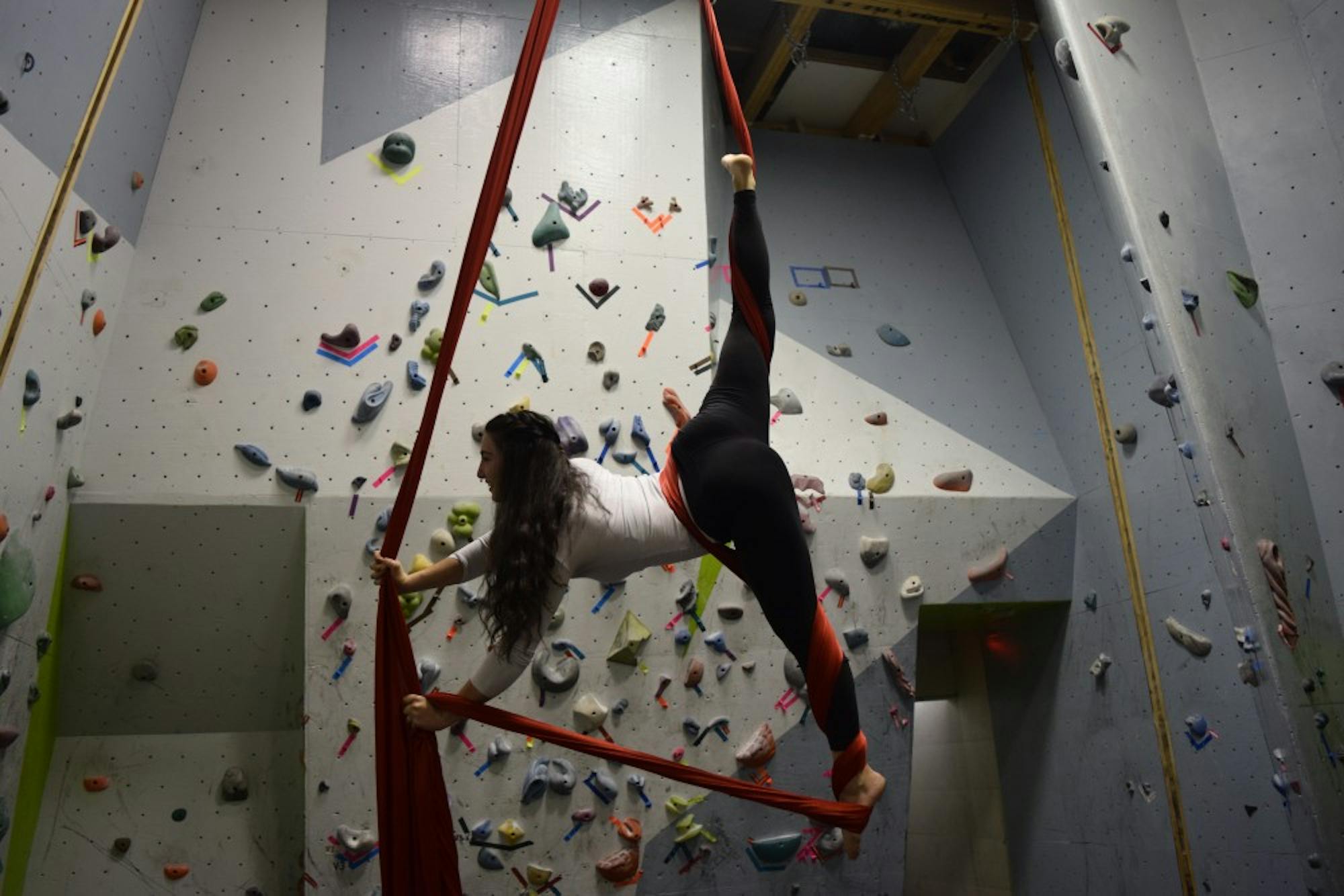Those who have ever seen one of the mesmerizing productions of Cirque du Soleil have likely witnessed a unique and difficult form of acrobatics: aerial silks. Aerial silks are performances involving ribbon-like fabrics that hang from a ceiling, allowing performers to climb into the air and engage in artistic twists, swings and poses. Aerial silks performances are particularly awe-inspiring because of the immense talent that is required to avoid danger while suspending oneself and moving about so high above the ground.
One might expect to see such challenging performances only from professional acrobats in shows like Cirque du Soleil. However, some Dartmouth students have fallen in love with the art of aerial silks.
Cindy Li ’18 and Catalina García ’21 are aerial silks enthusiasts who have brought their hobby to campus. Before they met, their paths to mastering aerial silks were remarkably different.
Li, who is from Los Angeles, took aerial silks classes in local gyms during her teenage years.
“I got into it in my junior year of high school,” Li said. “There [were] a bunch of aerial silks and aerial arts studios all around. I tried it out and really liked it, so I stuck to it.”
In contrast, García stumbled upon aerial silks by chance back in her home country of Chile.
“I just saw someone doing it in the park and I asked him if he could teach me some moves, and I loved it.” García said. “That was it. A few weeks later I bought my own silks and started training on my own.”
Without a gym or studio in which to practice, García had to find other ways to hone her aerial skills.
“At first I started training on my own, literally on trees,” García said. “I would just go to the park, climb a tree, hang the silks and do it. But later I joined a student circus. We had this space outside in which we had a metal structure, so we started training there.”
When the two students travelled thousands of miles to attend Dartmouth, they brought their hobby with them. They practice periodically — with extensive safety precautions in place — in the Jonathan Belden Daniels ’86 Memorial Climbing Gym with a small group of other curious people interested in aerial silks. There’s even a GroupMe on campus for all people interested in aerial silks.
“Here, the ideal thing would be to have an indoor or outdoor space [with] a structure [from] which we could hang the silks,” García said. “But right now we just hang them from … the roof in the climbing gym.”
However, beginners who try out aerial silks are likely to quickly discover just how difficult it is to master the art. Hannah McGrath ’21, a former gymnast, tried aerial silks for a short time when she was younger before realizing it wasn’t for her.
“You’re basically just using all of your own muscle to just hold yourself up in the air and do some really cool-looking tricks,” McGrath said. “But the hard part for me was when you had to let go with your hands and kind of trust the geometry of the knots that you had just tied with your legs to hold yourself up in the air. That was really nerve-wracking for me and that’s probably why I didn’t keep doing it. I just could not trust myself to let go.”
Though many people may be deterred by the physical impact aerial silks have on the body, Li is attracted to the hobby partially because of how it makes her feel.
“When I was younger I used to figure skate ... so I really liked how aerial silks [are] a different kind of exercise,” Li said. “It’s just as artistic, which appealed to me, but it uses a lot of core and upper body strength, both of which I had none of before doing this.”
It is important to remember that aerial silks are more than just another form of gymnastics or exercise: they present a unique art form that individual performers can put their own spin on.
“In aerial silks, you are restricted to the confines of these two fabrics, but with that you can do so much,” Li explained. “I’m really into doing very dramatic drops and spins, but there are also really pretty poses and stationary things you can do as well.”
Though they will be preparing for other careers after they leave Dartmouth, both Li and García plan to keep aerial silks in their lives. Li is particularly looking forward to going to San Fransisco this August chiefly because of the city’s reputation for having a “pretty big silk scene,” which she hopes to take advantage of on weekends.
“It depends on where I live, but usually there are these places called aerial studios or small circuses, places where you can go and train,” García said. “So I hope I can do that. Otherwise, I would continue hanging my own silks on trees!”




